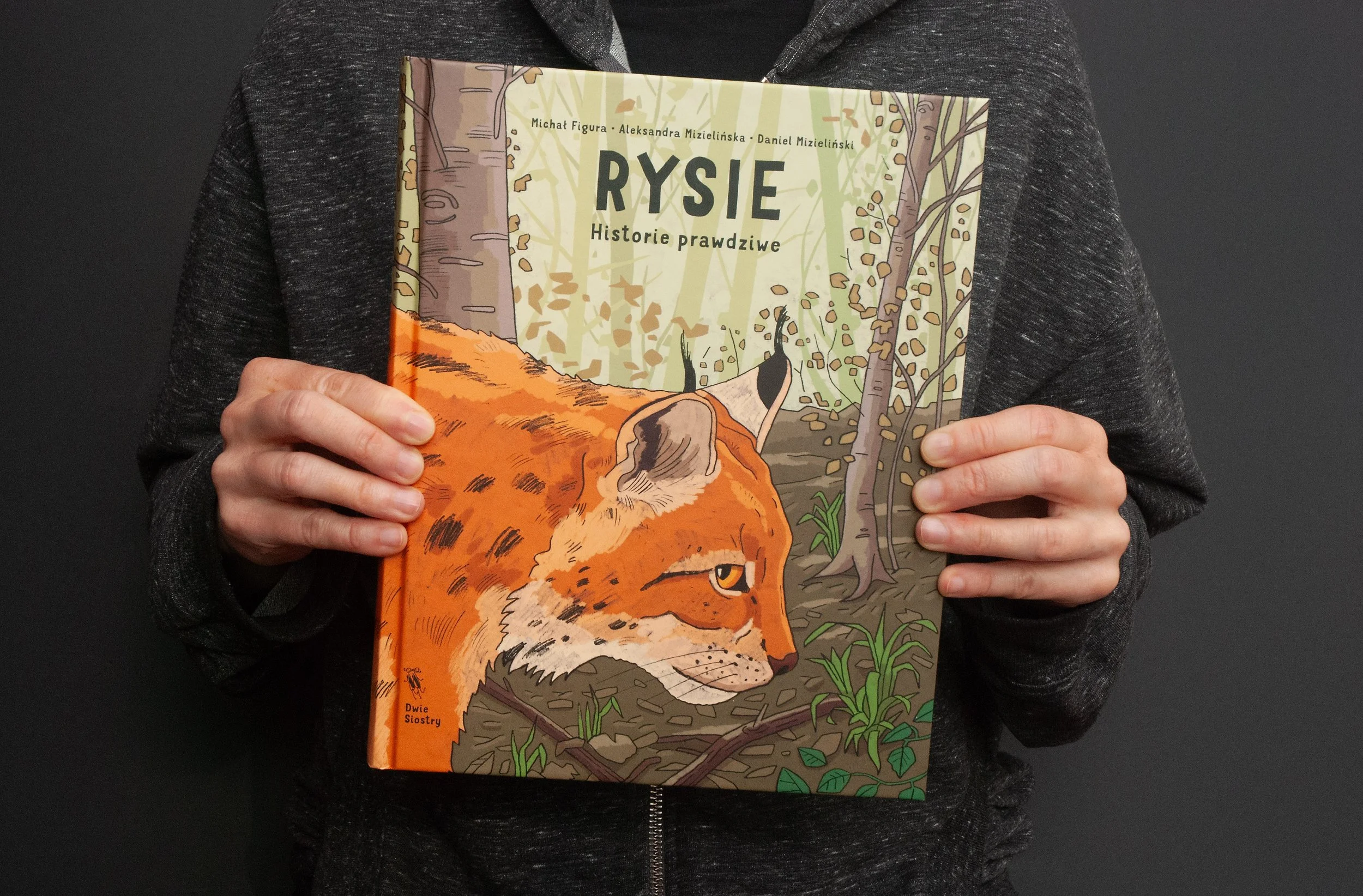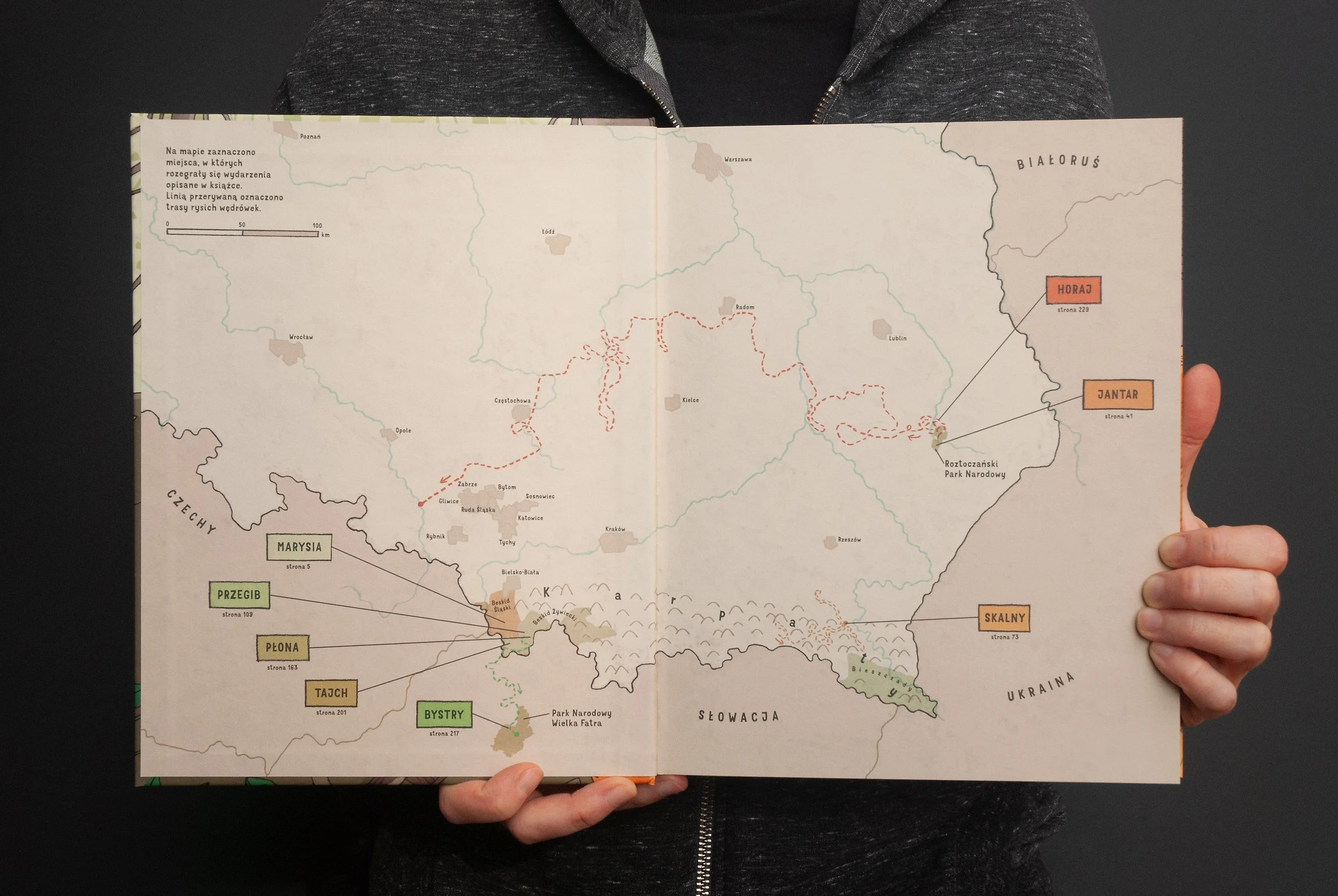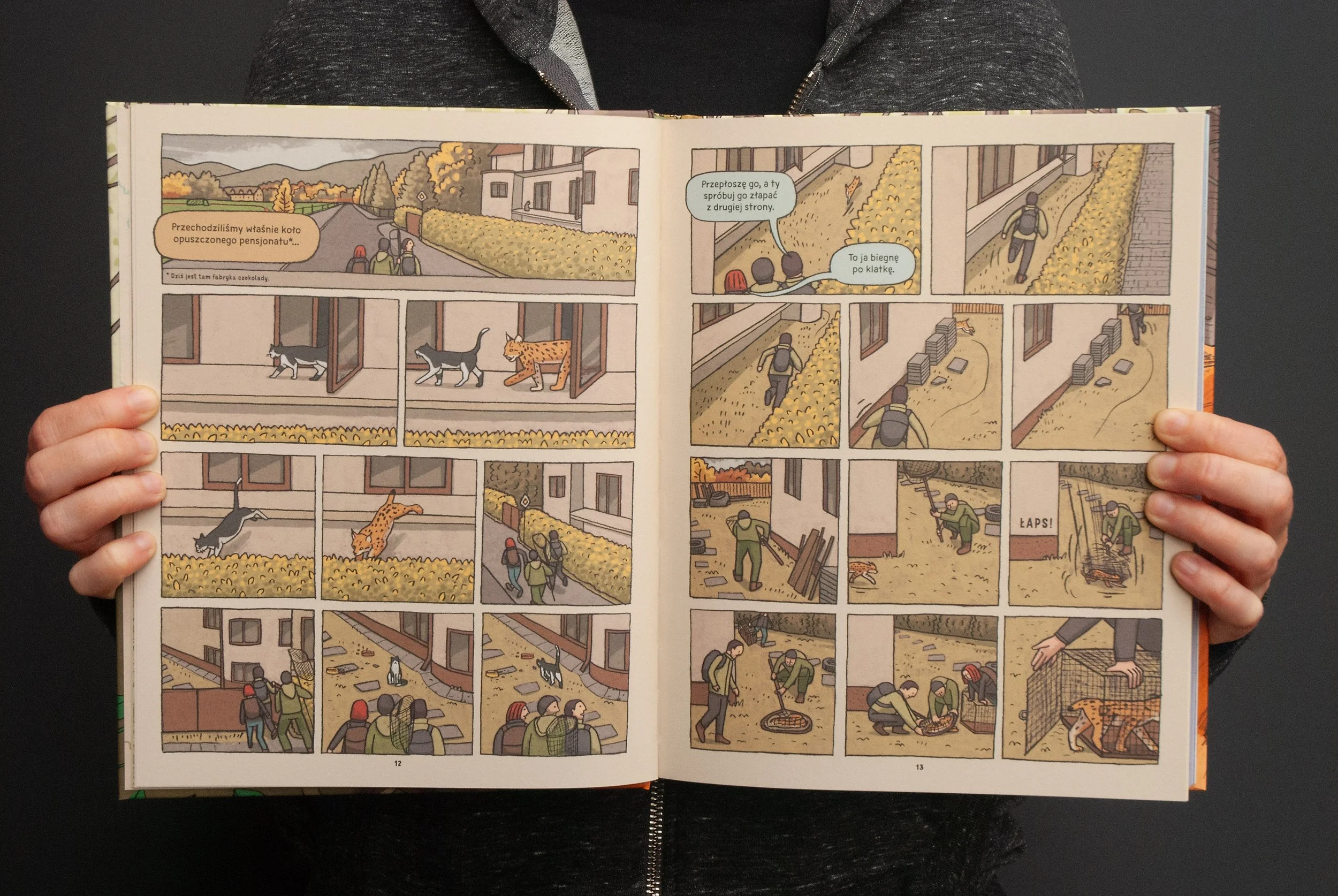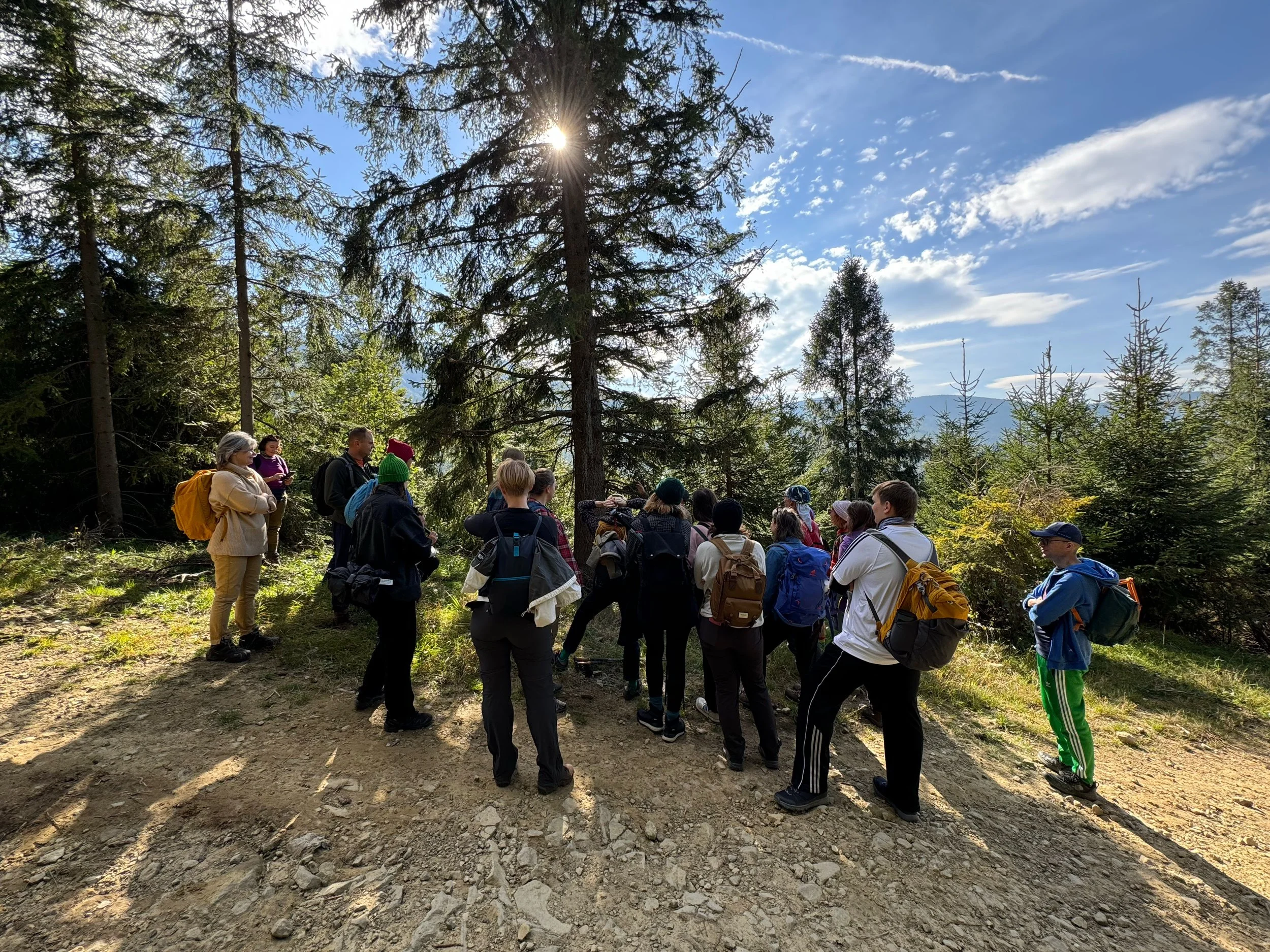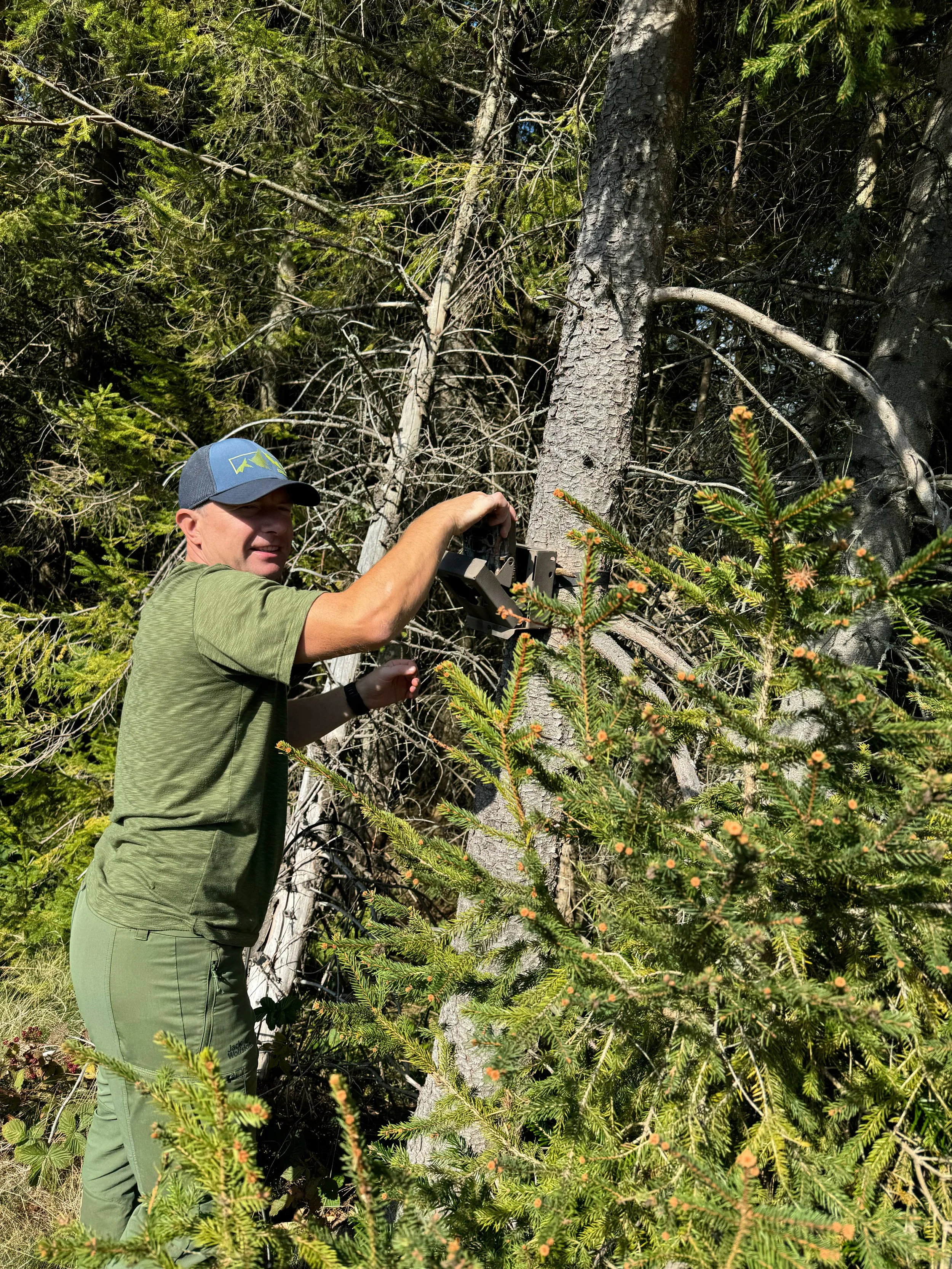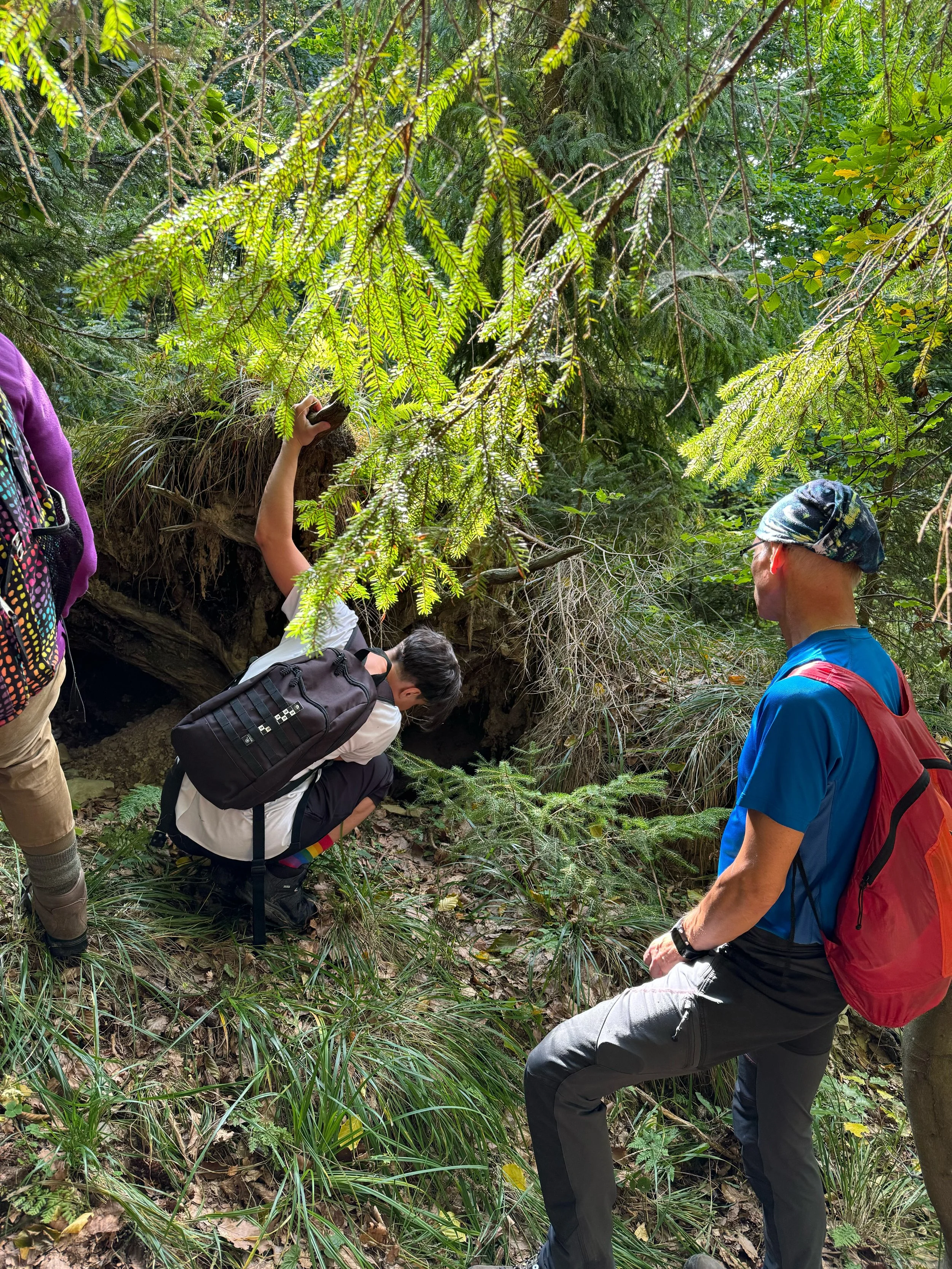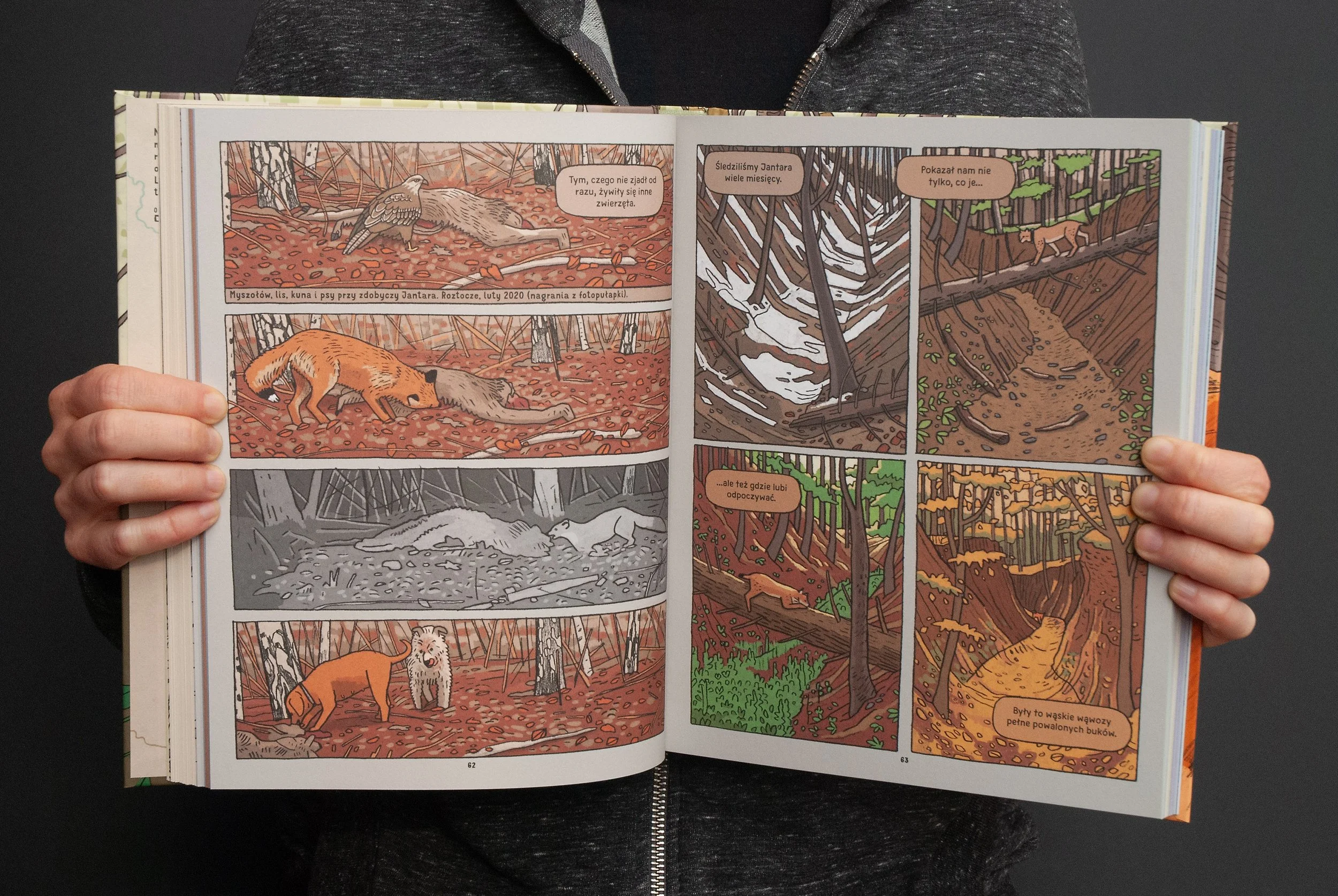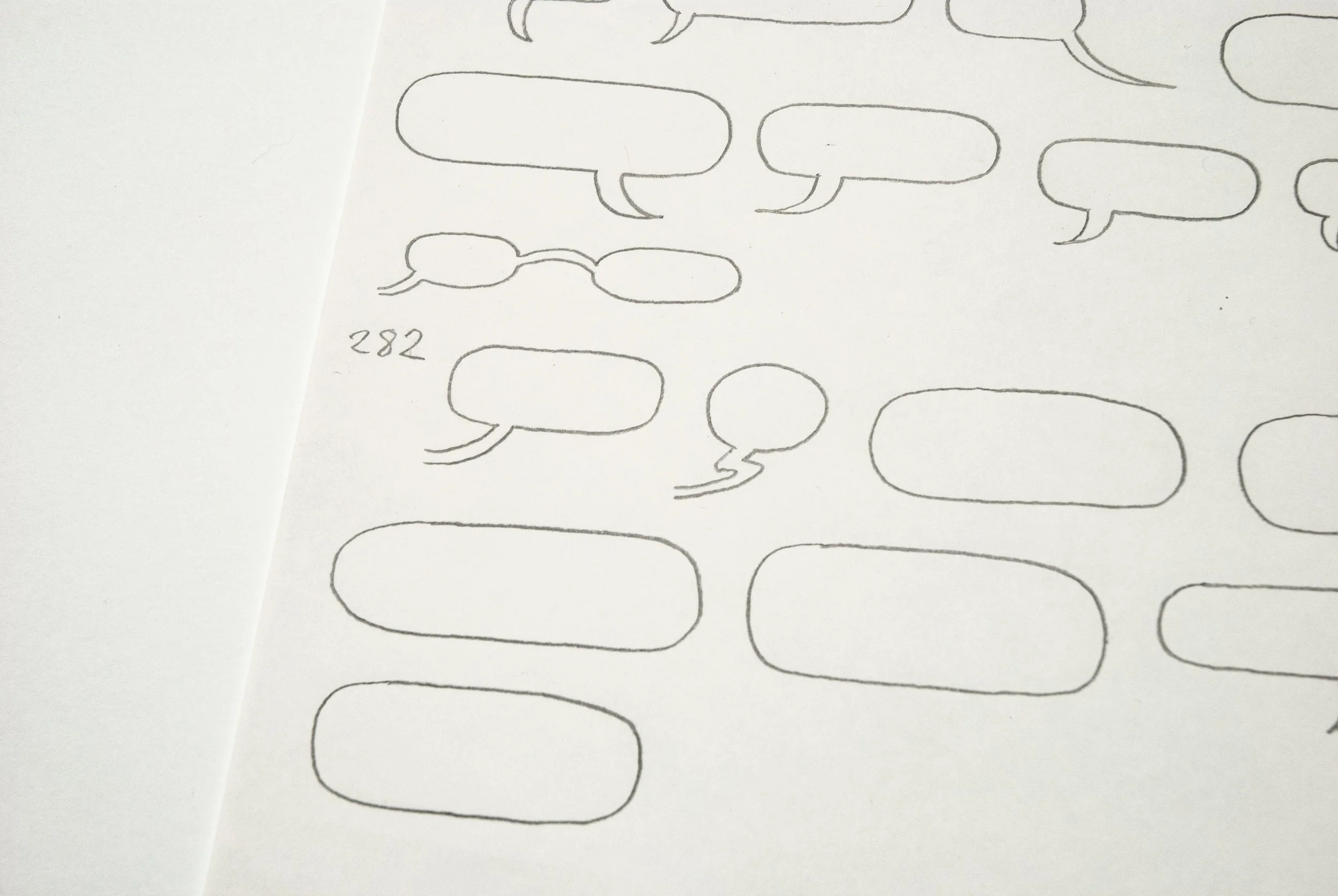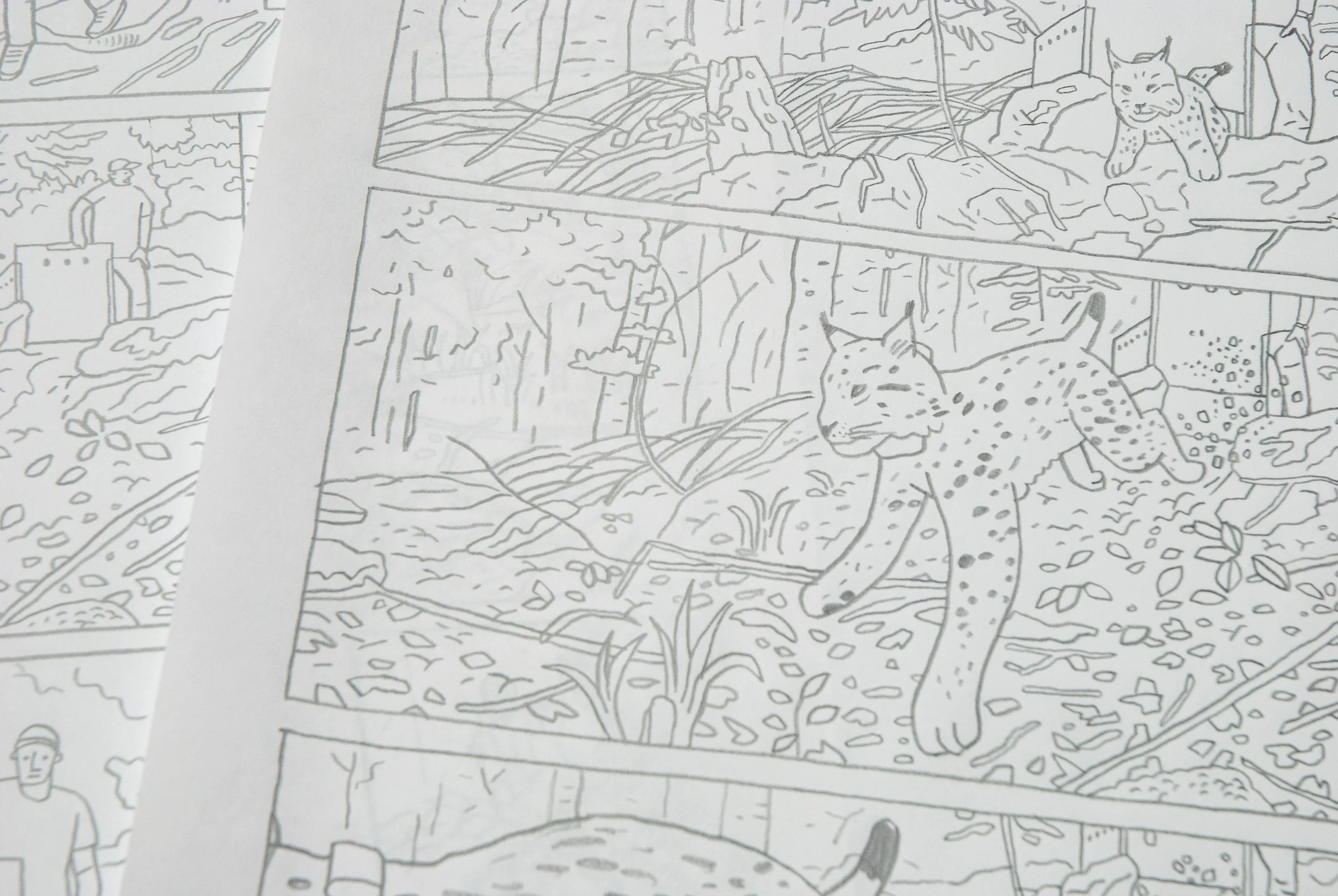Rysie
English title: Lynxes
co-author: Michał Figura
Publisher: Wydawnictwo Dwie Siostry
Warsaw 2025
Dimensions: 20 × 25 cm
Hardcover: 304 p.
ISBN: 978-83-8150-705-9
Alongside Wolves, this is our second book created with Michał Figura, one of three key figures in the Association for Nature “WOLF”, a wildlife science organization that studies the three big carnivores living in Poland: wolves, lynxes, and bears. Their research enables more effective species protection, but their day-to-day work is also about helping individual animals that have been harmed by human activity (whether intentional or not).
Similar to the Wolves book, we’re telling a story about dedicated people who work tirelessly for the good of animals – and, of course, about the lynxes themselves.
Once again, Michał will be your guide. And because we already explained many technical aspects in the previous book (camera traps, GPS, DNA), this time we can focus exclusively on the stories of individual cats. You’ll learn about Marysia, Jantar, Skalny, Przegib, Płona, Tajch, Bystry, and Horaj. All of them wore GPS collars, and thanks to that, we were able to recreate a period of their lives with remarcable precision.
Because lynx behavior is very different from that of wolves, this book tells a very different stories. Although at its core, it’s still a tale about protecting nature through modern, science-based knowledge.
Since the moment we decided to create Wolves, we were thinking about making a trilogy. In Poland, we have three big predators, so why not make one book for each of them. Of course, at the beginning we were focused on making Wolves as good as possible and didn’t really think about making a series. The other issue was that, back when we started working with Michał, he had a lot of wolves with collars but only one lynx – Marysia. We were afraid that it might not be enough for a second volume. Especially that we decided on a structure where a single chapter is a story of one wolf or one wolf family.
Thankfully, during the time we worked on Wolves (it took us 3 years to finish) and our following book (The City of the Dancing Carp), Michał, Sabina and Robert managed to put collars on a bunch of lynxes, and before we started writing the first chapter of Lynxes, we already had more stories than with the first book.
Since we started working with Michał, we never stopped calling each other. Every Thursday we chat on FaceTime, even if we have no book-related topics. We became close friends and have hiked together many times outside of any professional interests.
That’s why, when we started research for the lynx book, it was as smooth and easy as possible. We already knew how to work together and what each of us expected from other. In a few months, the stories were written, the photos and videos grouped in folders, and all the sources were meticulously organized in our Roam database.
During this process, we had a few trips to Michał’s home in the Beskid Żywiecki mountains, but one of those trip was special. If you’ve already read our post about the process of creating Wolves, you know that to convince our publisher, Dwie Siostry, to take in this project we proposed that we all go to a tracking workshop with Michał. Ewa and Jadzia (the owners of Dwie Siostry publishing house) thought it would be a good idea to repeat this trip on occasion of making the second volume of the book. Since the original workshop took place in 2019, many new people have started working at Dwie Siostry, and those who had already been on a previous trip were eager to once again listen to Michał’s lectures and follow him on a trail.
The process
It took us three years to finish Wolves but only a year to finish Lynxes (even though it’s a thicker book). There are a few reasons for that. One I already described: we already knew each other pretty well. Michał knew how the book was going to look like and what we needed to make it happen.
Because of that, the process of gathering stories with all necessary details was very efficient.
We also had a lot of experience using Roam Research, and our graph for wolves already contained a lot of information common for both books. For example, we already had photos of most people appearing in the book, we had pictures and 3D models of all cars used by Michał, Robert, and Sabina, we had pictures and descriptions of Mysikrólik Wildlife Rehabilitation Center or Roztocze Monitoring and Science Center.
Finally, Michał knew how to tell the story in a way that made our work easier. He was very descriptive because he remembered how we asked a lot of questions about a model of particular car, clothes someone was wearing, order of every detail including naps, bathroom breaks, changing wet clothes, or type of snack they had during a long car ride.
Visuals
As with the Wolves book, we were obsessed with making every panel as close to real life as possible. This time, Michał knew that we’re going to do another book, so he documented everything with that in mind. Thanks to him, we had every major action recorded, often with multiple cameras.
When Michał, Sabina, and Robert found Horaj’s collar, Michał took a photo and joked that this one is going to be used in the book – and that is exactly what happened.
We had a lot of fun piecing all those references together, especially that we had access to such a rich visual source. Below you can see some examples of how close our drawings are to a real-life references.
With the first book, we had to draw additional storyboard just for Michał. Normally, we would skip it and draw advanced sketches of each page. But we didn’t know if we had all the facts straight, so to avoid redoing a lot of pages, we sent a rough sketches of every chapter for Michał’s approval.
This time, we knew what is important to Michał, and he knew what we needed, so we skipped this stage and sent him just the written script and then, after his approval, a finalized line-art (with speech bubbles) of the whole chapter. This shaved a few months off the whole process.
Putting it all together
To sum it up, the process for each chapter looked like that:
First, we would write a complete script for a single chapter — including all the dialogues, descriptions of the surroundings, and the division of scenes into pages, and pages into panels. We would send that to Michał and wait for him to check it for mistakes.
Then we would place the dialogues into Adobe InDesign and arrange them within the panels (in later chapters, we started writing the scripts directly in InDesign to make the process even faster).
Next, we would print the pages with frames and text, and draw the sketches in pencil directly on the printed layout. We’d then use a red pencil to draw in the speech bubbles, to make sure they fit within the composition.
After that, we used a lightbox to trace the final drawing, then scanned it and added color in Adobe Photoshop. The speech bubbles were drawn on a separate piece of paper so we could place them over the image (in case we needed to move them or change their size).
I’m really happy with how well we managed to optimize our process. After completing half of the book, we even decided to finish all the line art first and then go back to add the color. Normally, we never work that way, since color is extremely important to us and we don’t want to lose the ideas we had in mind while drawing. But thanks to that, Karolina Iwaszkiewicz (our editor) was able to do her part while we focused on coloring. This way the entire book (including editing and proofreading) was finished in just a little over a year.
The heroes
As with our book Wolves, we once again had to draw real people – not just abstract figures from the past or characters distant enough that we wouldn’t care what they think. We drew people we know, and some of them are even close friends. Fortunately, they already knew how we would depict them, so this time we were not stressed about it. Hopefully, they still like the way we see them.
Foreign editions
The foreign editions are (hopefully) coming soon. We’ll post details as soon as we can.
You can find a Google Sheet with a list of all our foreign editions here.

